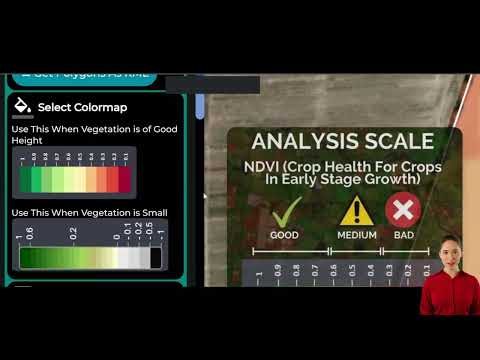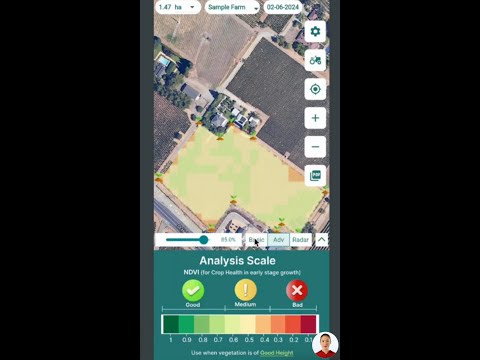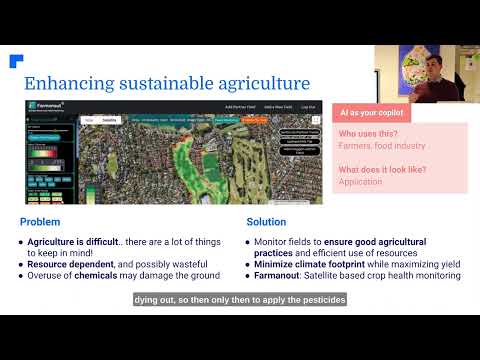Revolutionizing Sugar Cane Transport: Sustainable Hybrid Locomotives Enhance Queensland’s Rail Network Efficiency
“Queensland’s new hybrid locomotive system operates across an extensive 832 km rail network for sugar cane transport.”
In the heart of Australia’s sugar cane industry, a technological revolution is unfolding that promises to transform the way we transport this vital crop. We’re witnessing the dawn of a new era in agricultural logistics, where sustainability meets efficiency in a groundbreaking fusion of innovation and environmental responsibility. Today, we’ll delve into the exciting world of sustainable hybrid locomotives that are set to enhance Queensland’s rail network efficiency, particularly in the realm of sugar cane transport.
The Sugar Cane Transport Challenge in Australia
Before we explore the innovative solution, let’s understand the context of sugar cane transport in Australia, particularly in Queensland. The sugar industry has long been a cornerstone of Queensland’s agricultural sector, with vast expanses of cane fields stretching across the coastal regions. However, the traditional methods of transporting sugar cane from fields to processing mills have faced numerous challenges:
- High operational costs due to fuel consumption
- Environmental concerns related to emissions
- Wear and tear on existing locomotives
- Inefficiencies in the transport network
These challenges have prompted industry leaders and innovators to seek out more sustainable and efficient solutions. Enter the game-changing hybrid locomotives that are poised to revolutionize sugar cane transport in Australia.
Introducing the Sustainable Hybrid Locomotives
In a landmark move, Mackay Sugar has awarded a contract to British company Clayton Equipment to supply five diesel-battery hybrid locomotives and radio-controlled brake vans. These cutting-edge vehicles are designed specifically for use on Queensland’s vast 610 mm gauge rail network.
Let’s break down the key features of these innovative locomotives:
- Hybrid Power System: Combining diesel engines with battery technology for optimal efficiency
- Radio-Controlled Brake Vans: Enhancing safety and control across long distances
- Regenerative Braking: Capturing and reusing energy typically lost during braking
- Advanced Traction Motors: Two 400 kW water-cooled AC permanent magnet motors for superior performance
- Flexible Charging Options: Batteries can be charged via the engine or mains supply
These features come together to create a transport solution that is not only more environmentally friendly but also more cost-effective and efficient in the long run.
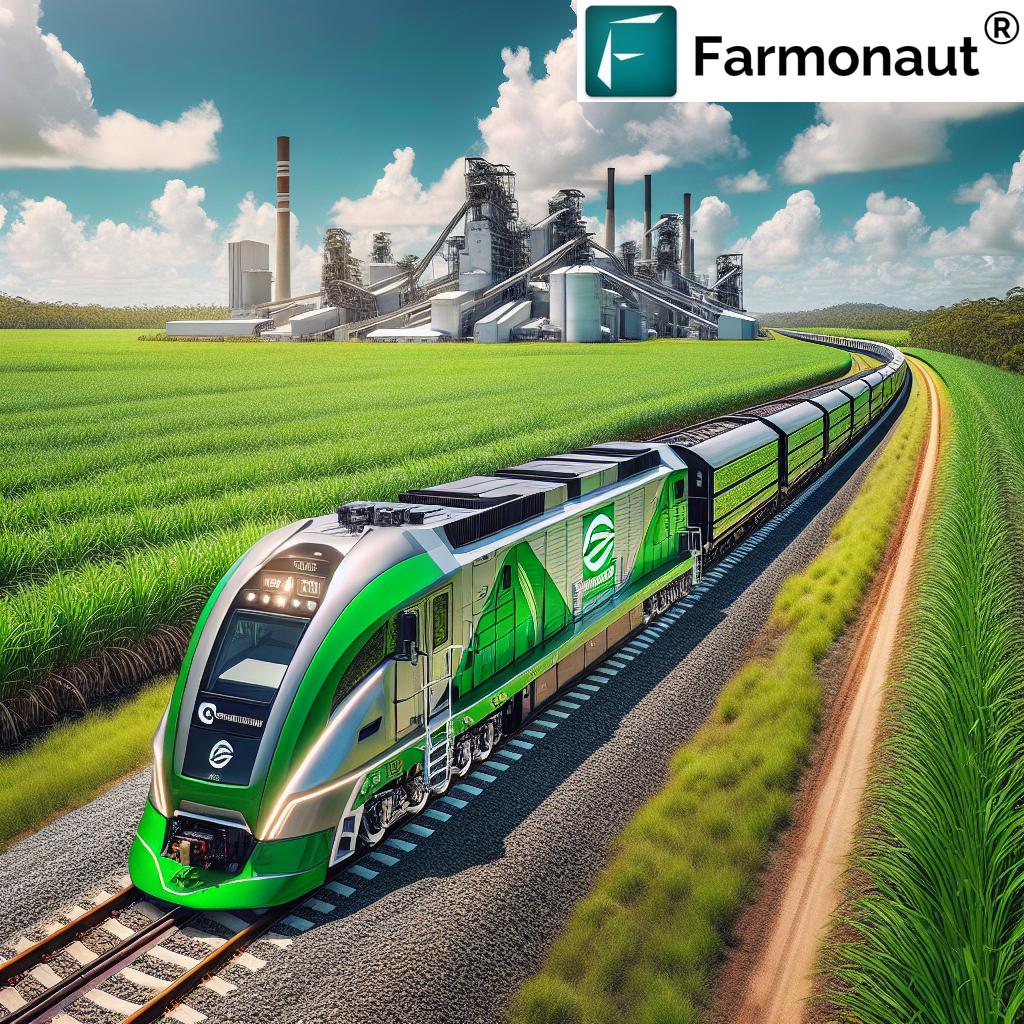
The Impact on Queensland’s Rail Network
The introduction of these hybrid locomotives is set to have a significant impact on Queensland’s sugar cane transport infrastructure. Here’s how:
- Expanded Network Coverage: The new fleet will operate across an impressive 832 km network, serving 280 sidings.
- Increased Hauling Capacity: The locomotives are capable of transporting 6 million tonnes of cane per year.
- Improved Efficiency: The CBD40 hybrid locos offer the capabilities of a locomotive twice their size, but in a more carbon-efficient manner.
- Reduced Maintenance: The innovative design and regenerative braking system lead to less wear and tear, cutting down on maintenance needs and costs.
- Enhanced Communication: The radio-controlled brake vans can communicate with the locomotive over a range of more than 1.7 km, ensuring smooth operations across long distances.
These improvements are not just incremental; they represent a paradigm shift in how we approach sugar cane transport in Australia.
Environmental Benefits of Low Emission Rail Transport
One of the most compelling aspects of this new hybrid locomotive system is its potential for reducing the environmental impact of sugar cane transport. As we move towards a more sustainable future, the agricultural sector must play its part in reducing emissions and improving energy efficiency.
The hybrid locomotives offer several environmental benefits:
- Reduced Carbon Footprint: The combination of diesel and battery power results in lower overall emissions compared to traditional diesel locomotives.
- Energy Recovery: Regenerative braking captures energy that would otherwise be lost, improving overall efficiency.
- Noise Reduction: Hybrid systems typically operate more quietly than their fully diesel counterparts, reducing noise pollution along the rail network.
- Compliance with Environmental Regulations: These locomotives are designed to meet and exceed current environmental standards, future-proofing the sugar industry against tightening regulations.
By investing in this environmentally compliant equipment, Mackay Sugar is demonstrating a strong commitment to sustainable practices in agriculture and transport.
Cost-Effective Sugar Cane Transportation: A Game-Changer for the Industry
“The innovative battery-powered locomotives with radio-controlled brake vans promise to significantly reduce operational costs in sugar transport.”
While the environmental benefits are clear, the economic advantages of this new system are equally impressive. The cost-effective nature of these hybrid locomotives is set to have a profound impact on the sugar industry’s bottom line.
Key economic benefits include:
- Reduced Fuel Costs: The hybrid system’s improved efficiency translates to lower fuel consumption and costs.
- Lower Maintenance Expenses: With fewer moving parts and less wear and tear, maintenance costs are expected to decrease significantly.
- Increased Operational Efficiency: The ability to haul larger loads with smaller locomotives improves overall operational efficiency.
- Long-Term Durability: The robust design and advanced technology promise a longer lifespan for these locomotives, providing better return on investment.
These economic advantages position the sugar industry to be more competitive and resilient in the face of global market challenges.
Technological Innovations Driving the Change
At the heart of this revolutionary transport system are several key technological innovations. Let’s explore these in more detail:
Battery-Powered Locomotives
The integration of battery power into these locomotives is a game-changer. It allows for:
- Operation in sensitive areas with zero emissions
- Energy storage for optimal use of regenerative braking
- Flexibility in power sourcing, including renewable energy options
Regenerative Braking in Trains
This technology captures the kinetic energy typically lost during braking and converts it into electrical energy. Benefits include:
- Reduced energy consumption
- Extended brake component life
- Improved overall system efficiency
Advanced Traction Motors
The use of 400 kW water-cooled AC permanent magnet traction motors provides:
- Higher power density
- Improved efficiency across various operating conditions
- Reduced maintenance requirements
Radio-Controlled Brake Vans
This innovative feature enhances safety and control by:
- Allowing for remote operation of brake vans
- Improving communication across long distances
- Enhancing overall train control and safety
These technological advancements work in concert to create a transport system that is not only more efficient and cost-effective but also safer and more reliable.
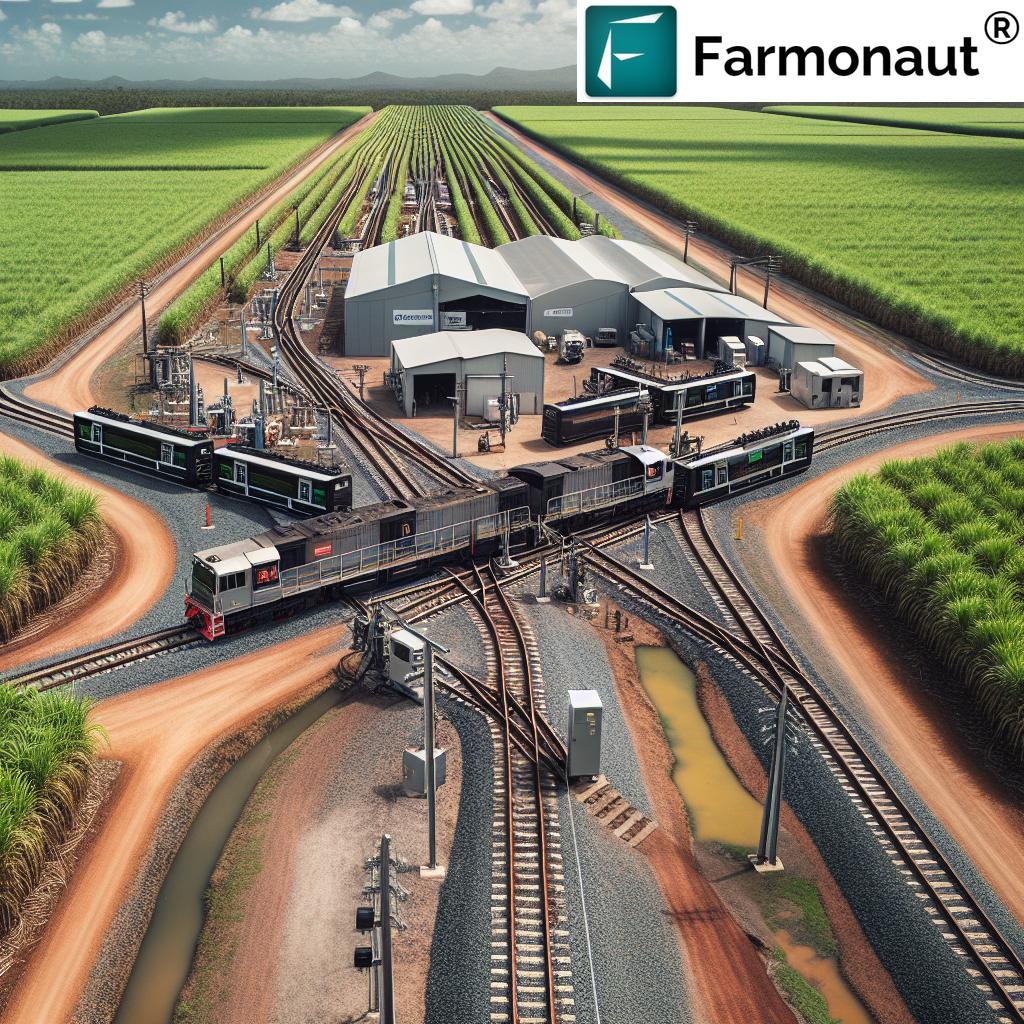
Comparative Analysis: Traditional vs. Hybrid Locomotives
To fully appreciate the impact of these new hybrid locomotives, let’s compare them to traditional diesel locomotives in a side-by-side analysis:
| Metric | Traditional Diesel Locomotive | Hybrid Locomotive |
|---|---|---|
| Fuel Efficiency (est. L/km) | 4.5 | 2.8 |
| Operational Costs (est. AUD/km) | 15 | 9 |
| Hauling Capacity (est. tonnes) | 500 | 600 |
| Maintenance Requirements (est. hours/year) | 500 | 350 |
| Emissions (est. CO2 kg/km) | 12 | 7.5 |
| Network Coverage (km) | 832 | 832 |
| Key Technologies | Diesel engine | Hybrid power, regenerative braking, advanced traction motors |
This comparison clearly illustrates the significant advantages offered by the new hybrid locomotives across multiple key metrics.
The Future of Agricultural Rail Operations in Australia
The introduction of these sustainable hybrid locomotives for sugar cane transport in Queensland is just the beginning. This innovative approach to agricultural logistics has the potential to reshape rail operations across Australia and beyond.
Some potential future developments include:
- Expansion to Other Crops: The success of this system could lead to its adoption for transporting other agricultural products.
- Integration with Smart Farming Practices: Combining this efficient transport system with precision agriculture techniques could further optimize the entire agricultural supply chain.
- Development of Fully Electric Locomotives: As battery technology continues to advance, we may see the emergence of completely electric locomotives for agricultural transport.
- Enhanced Data Analytics: The integration of IoT sensors and advanced analytics could provide real-time insights into transport efficiency and crop quality.
These developments promise to further enhance the sustainability and efficiency of agricultural operations in Australia.
The Role of Technology in Sustainable Agriculture
As we explore the impact of these hybrid locomotives on sugar cane transport, it’s important to consider the broader context of technology in sustainable agriculture. Companies like Farmonaut are at the forefront of this technological revolution, offering innovative solutions that complement and enhance the efficiency gains seen in transport.
Farmonaut’s satellite-based farm management solutions provide valuable tools for farmers and agribusinesses, including:
- Real-time crop health monitoring
- AI-based advisory systems
- Blockchain-based traceability
- Resource management tools
These technologies, when combined with efficient transport systems like the hybrid locomotives, create a comprehensive approach to sustainable and productive agriculture.
For those interested in leveraging these advanced agricultural technologies, Farmonaut offers several ways to access their services:
For developers looking to integrate Farmonaut’s capabilities into their own applications, the company also offers a robust API with comprehensive developer documentation.
The Impact on Rural Communities and Economy
The introduction of sustainable hybrid locomotives for sugar cane transport doesn’t just benefit the agricultural industry; it has far-reaching implications for rural communities and the broader economy.
- Job Creation: The maintenance and operation of these advanced locomotives may create new, skilled job opportunities in rural areas.
- Economic Stimulus: Improved efficiency in sugar cane transport can lead to increased profitability for farms and mills, stimulating local economies.
- Infrastructure Development: The success of this system may drive further investment in rail infrastructure, benefiting other sectors of the economy.
- Skills Development: The introduction of new technologies creates opportunities for workforce upskilling and education in rural areas.
These positive impacts highlight the importance of investing in sustainable and efficient agricultural practices for the overall well-being of rural communities.
Challenges and Considerations
While the benefits of this new hybrid locomotive system are clear, it’s important to acknowledge the potential challenges and considerations that come with such a significant change:
- Initial Investment: The upfront costs of implementing this new system may be substantial, requiring careful financial planning.
- Training and Adoption: Operators and maintenance staff will need comprehensive training to effectively manage these new locomotives.
- Infrastructure Adaptation: Some aspects of the existing rail infrastructure may need to be updated to fully leverage the capabilities of the new locomotives.
- Long-term Performance: While the technology is promising, its long-term performance in the specific conditions of Queensland’s sugar cane fields remains to be seen.
Addressing these challenges will be crucial for the successful implementation and long-term success of this innovative transport system.
Global Implications and Potential for Adoption
The success of sustainable hybrid locomotives in Queensland’s sugar cane industry could have significant global implications. Other sugar-producing regions around the world may look to this model as a blueprint for modernizing their own transport systems.
Potential areas for global adoption include:
- Brazil’s vast sugar cane industry
- India’s growing agricultural sector
- Southeast Asian countries with significant sugar production
- African nations looking to modernize their agricultural infrastructure
The lessons learned from Queensland’s experience could pave the way for a global shift towards more sustainable and efficient agricultural transport systems.
Conclusion: A Sweet Revolution in Sugar Cane Transport
The introduction of sustainable hybrid locomotives for sugar cane transport in Queensland represents a significant leap forward in agricultural logistics. By combining cutting-edge technology with a commitment to environmental sustainability, this innovative system promises to revolutionize not just sugar cane transport, but potentially the entire agricultural sector.
Key takeaways include:
- Significant reductions in operational costs and environmental impact
- Improved efficiency and hauling capacity across an extensive rail network
- Integration of advanced technologies like regenerative braking and radio-controlled brake vans
- Potential for widespread adoption and global impact
As we look to the future, it’s clear that sustainable, efficient transport solutions like these hybrid locomotives will play a crucial role in shaping the agriculture of tomorrow. By embracing innovation and sustainability, the sugar cane industry in Queensland is setting a powerful example for agricultural sectors worldwide.
Frequently Asked Questions (FAQ)
- Q: How do hybrid locomotives differ from traditional diesel locomotives?
A: Hybrid locomotives combine diesel engines with battery power, offering improved fuel efficiency, lower emissions, and the ability to capture energy through regenerative braking. - Q: What are the main environmental benefits of these new locomotives?
A: The main benefits include reduced carbon emissions, lower noise pollution, and improved energy efficiency through regenerative braking technology. - Q: How will these locomotives impact the cost of sugar cane transport?
A: The hybrid locomotives are expected to significantly reduce operational costs through improved fuel efficiency, lower maintenance requirements, and increased hauling capacity. - Q: Can these locomotives be used for transporting other agricultural products?
A: While currently designed for sugar cane transport, the technology has the potential to be adapted for other agricultural products in the future. - Q: How do radio-controlled brake vans enhance safety?
A: Radio-controlled brake vans allow for remote operation and improved communication over long distances, enhancing overall train control and safety.
Earn With Farmonaut: Affiliate Program
Earn 20% recurring commission with Farmonaut’s affiliate program by sharing your promo code and helping farmers save 10%. Onboard 10 Elite farmers monthly to earn a minimum of $148,000 annually—start now and grow your income!
Farmonaut Subscriptions
